Previous Day - Next Day

I look at the world and I notice it’s turning.
While my guitar gently weeps.
With every mistake we must surely be learning,
Still my guitar gently weeps.
~ George Harrison
Wikipedia (George Harrison (February 25, 1943 - November 29, 2001) British songwriter, musician and film producer best known as a member of The Beatles.)
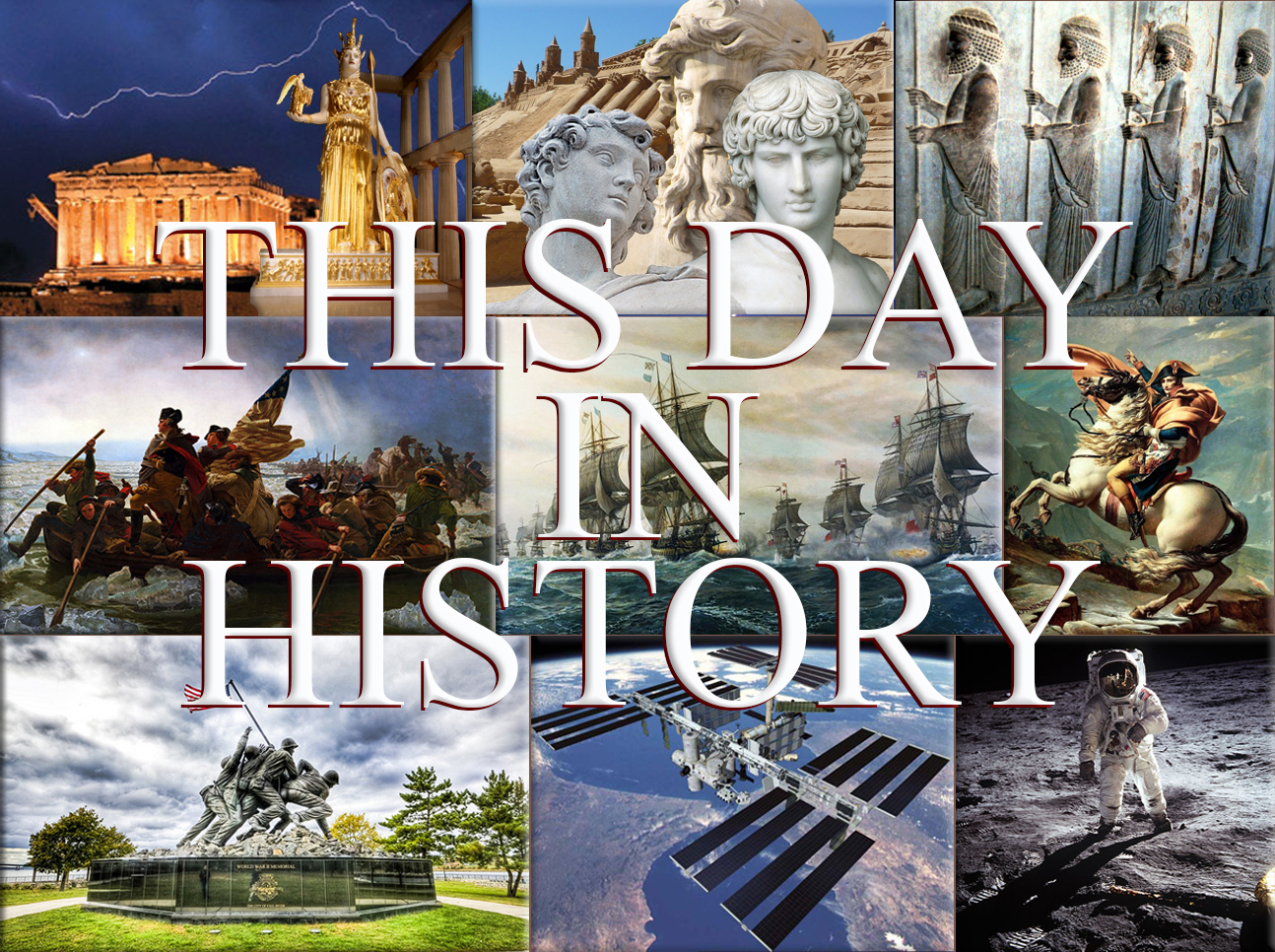
February 25th, 138
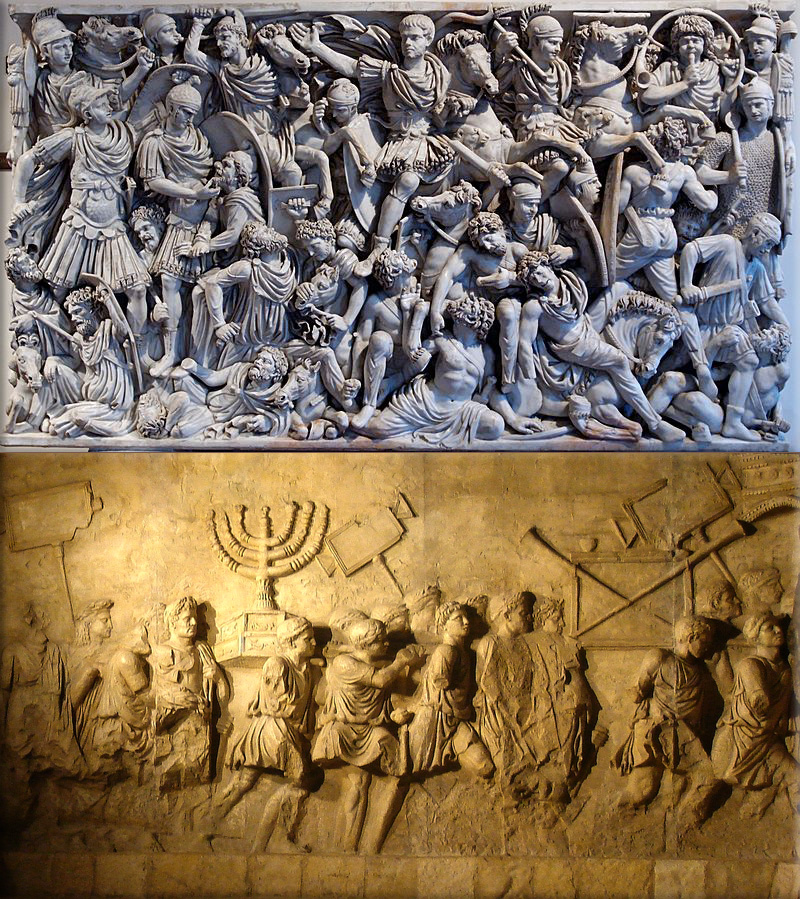
Roman Empire:
138 - Emperor Hadrian adopts Antoninus Pius, effectively making him his successor.
Wikipedia Image: Relief from a 3rd-century sarcophagus depicting a battle between Romans and Germanic warriors; the central figure is perhaps the emperor Hostilian / Depiction of the Menorah on the Arch of Titus in Rome.
February 25th, 493

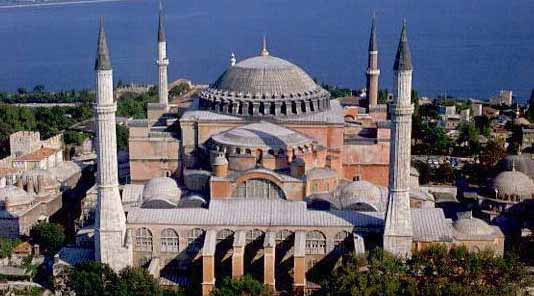
Roman Empire / Byzantine Empire (East Roman Empire):
493 - Odoacer surrenders Ravenna after a 3-year siege and agrees to a mediated peace with Theodoric the Great.
Wikipedia Image: The Baptism of Constantine painted by Raphael's pupils (1520–1524, fresco, Vatican City, Apostolic Palace); Mural of Saints Cyril and Methodius, 19th century, Troyan Monastery, Bulgaria; Justinian I depicted on one of the famous mosaics of the Basilica of San Vitale, Ravenna; The Greek fire was first used by the Byzantine Navy during the Byzantine-Arab Wars (from the Madrid Skylitzes, Biblioteca Nacional de España, Madrid); Alexios I, founder of the Komnenos dynasty.
Photo: Byzantine Empire is the great church of Hagia Sophia (Church of the Holy Wisdom) in Constantinople (562).
February 25th, 1336
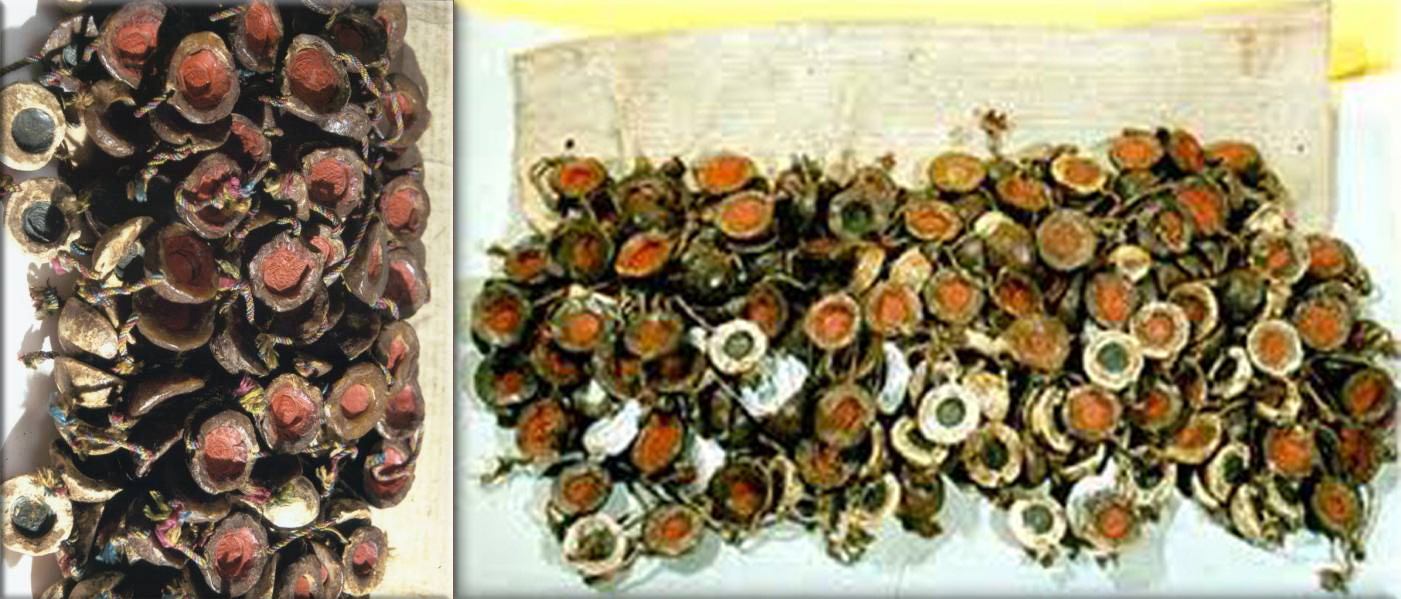
4,000 defenders of Pilėnai commit a mass suicide rather than be taken captive by the Teutonic Knights.
Wikipedia Painting: Warsaw Confederation (January 28, 1573); an important development in the history of Poland and Lithuania that extended religious tolerance to nobility and free persons within the Polish-Lithuanian Commonwealth is considered the formal beginning of religious freedom in the Polish-Lithuanian Commonwealth, and in fact is the first such document in Europe.
February 25th, 1570
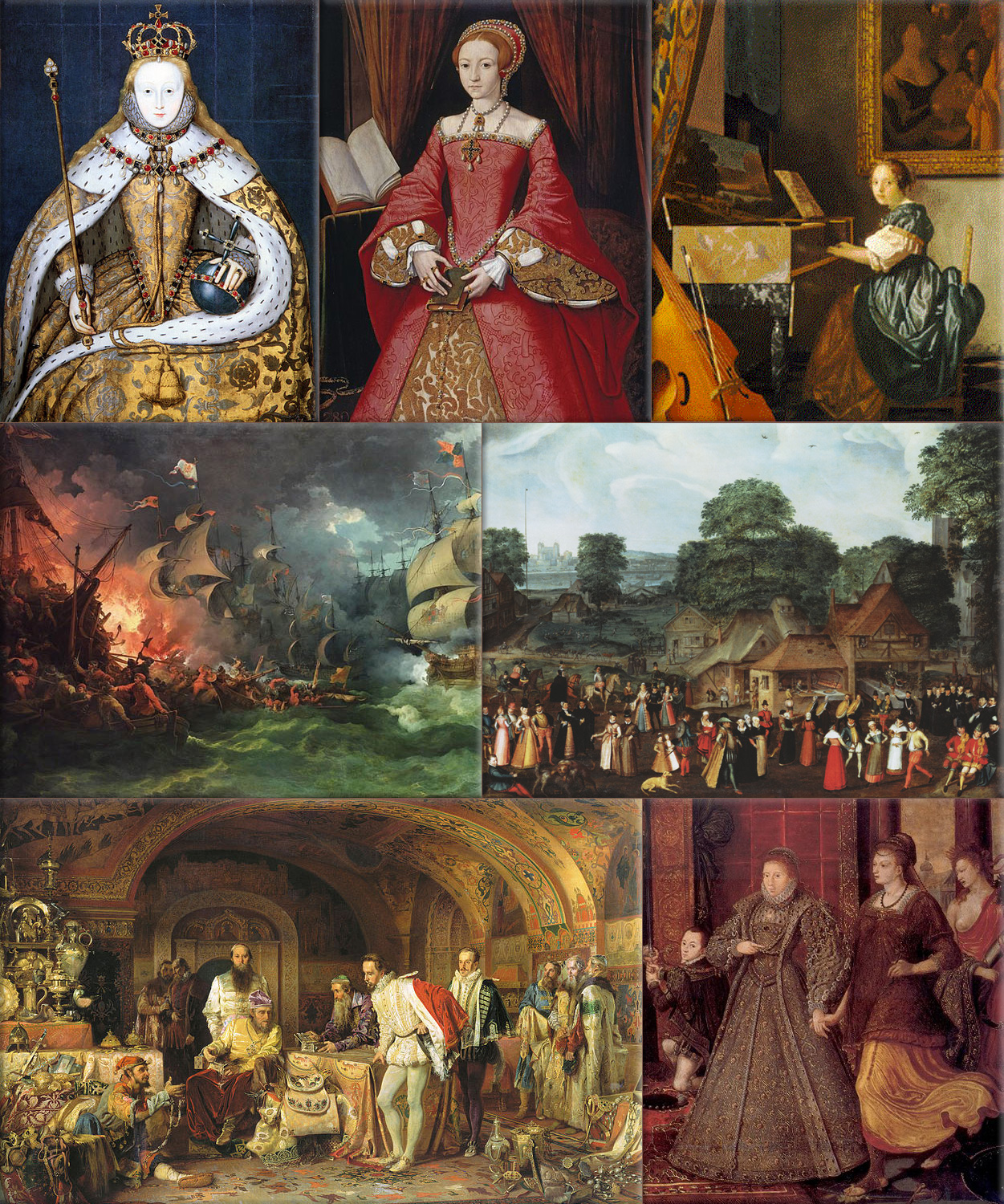
Elizabethan era begins (1558–1603):
1570 - Pope Pius V excommunicates Queen Elizabeth I.
Wikipedia Painting: Elizabeth I in her coronation robes, patterned with Tudor roses and trimmed with ermine; The Lady Elizabeth in about 1546; Elizabeth playing the virginals; Elizabeth and Philip, King of Spain, relations deteriorated ending in the defeat of the Spanish Armada; A wedding feast, 1569; Ivan the Terrible shows his treasures to Elizabeth's ambassador, by Alexander Litovchenko, 1875; Elizabeth ushers in Peace and Plenty. Detail from The Family of Henry VIII: An Allegory of the Tudor Succession, 1572, attributed to Lucas de Heere.
February 25th, 1631
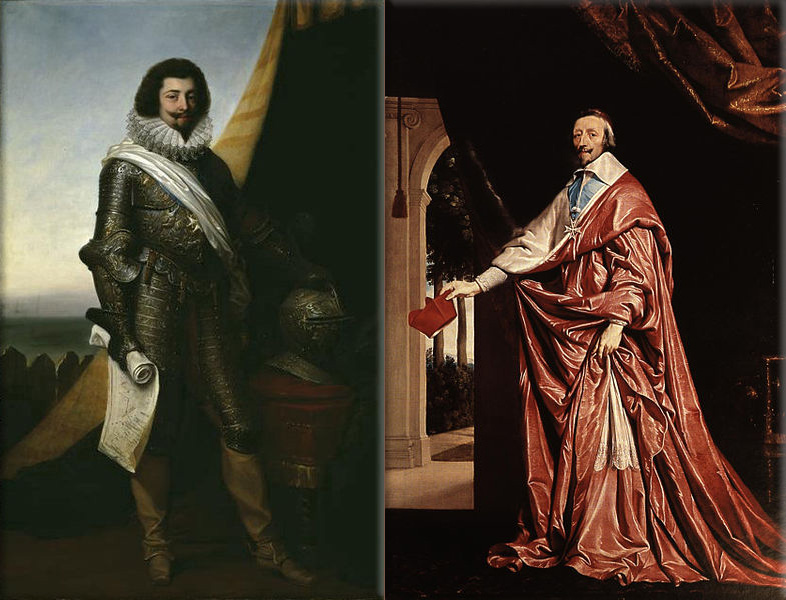
François de Bassompierre, a French courtier, arrested by Richelieu's orders.
Wikipedia Painting: François de Bassompierre - Richelieu (a leading character in The Three Musketeers by Alexandre Dumas)
February 25th, 1836
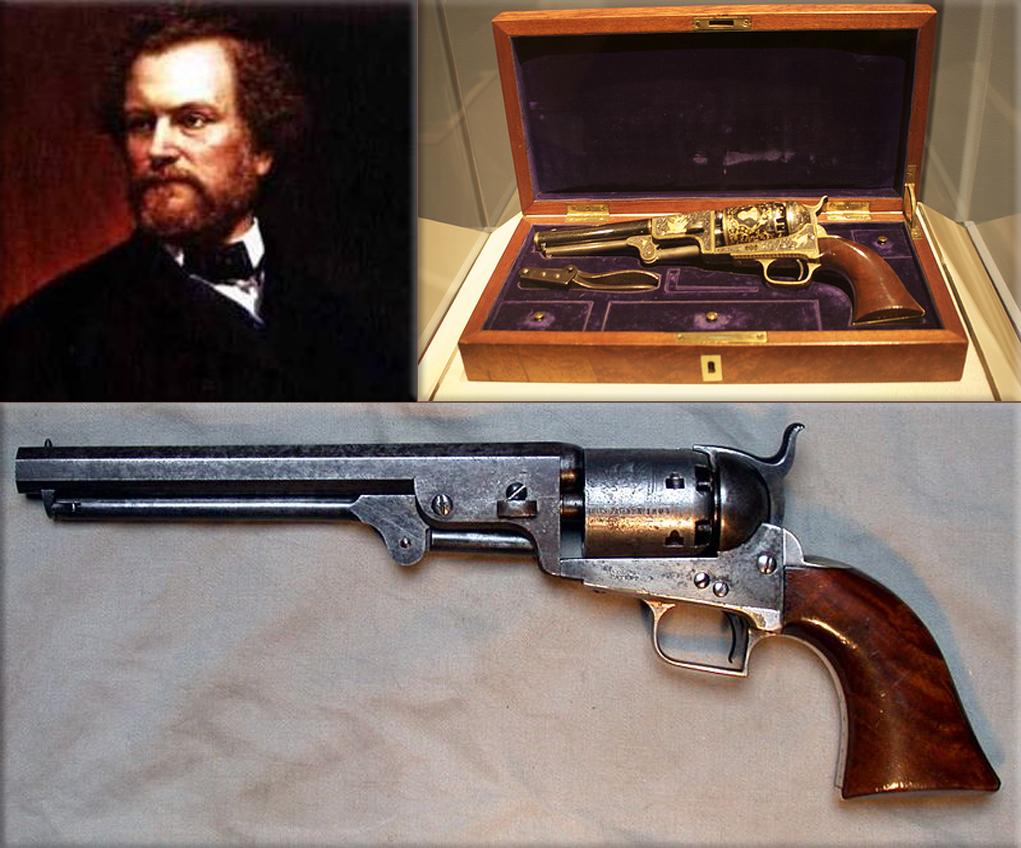
Samuel Colt is granted a United States patent for the Colt revolver.
Wikipedia Image: Samuel Colt was an American inventor and industrialist from Hartford, Connecticut, founder of Colt's Patent Fire-Arms Manufacturing Company (now known as Colt's Manufacturing Company), and made the mass-production of the revolver commercially viable for the first time.
February 25th, 1843
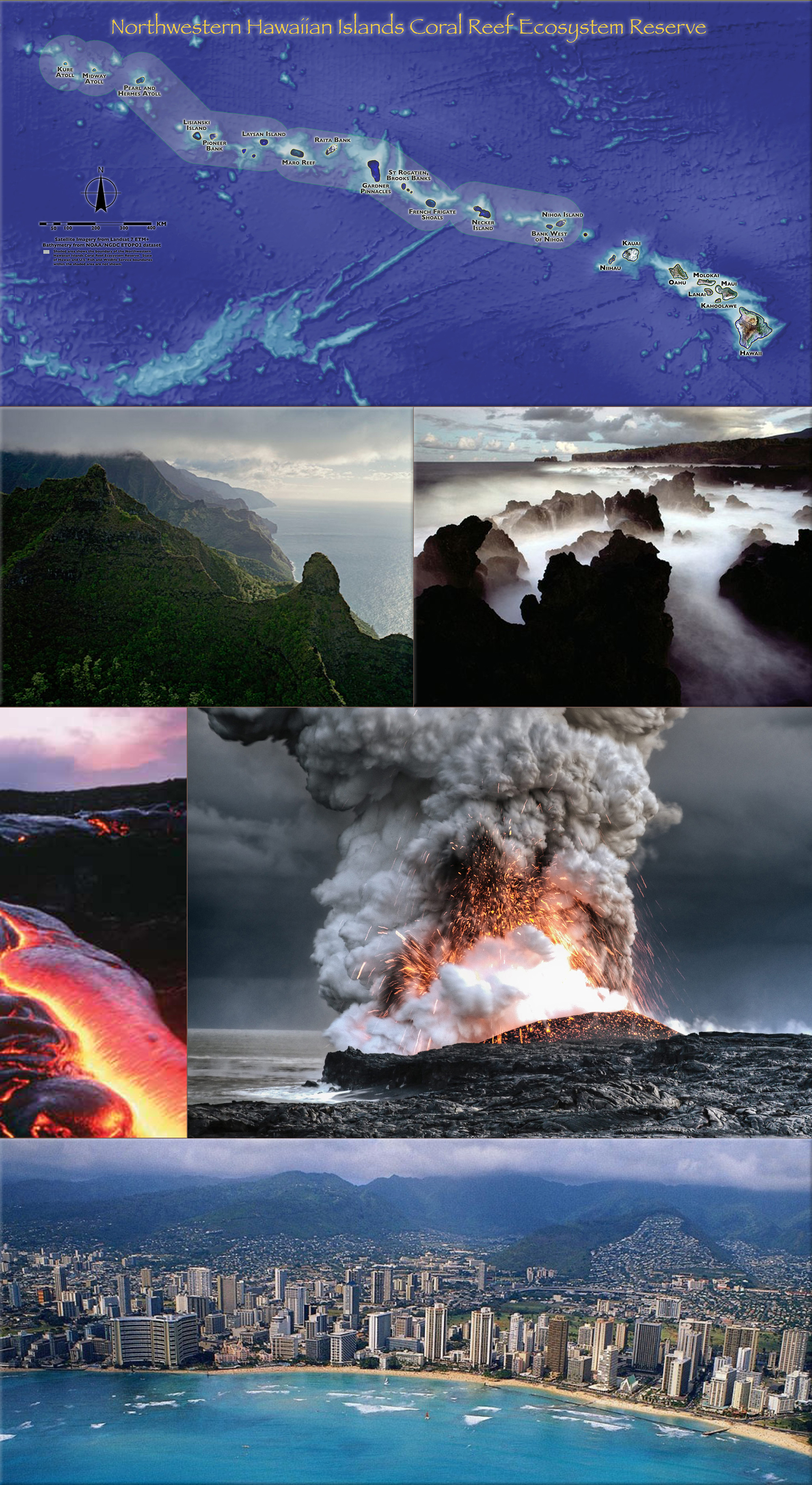
Provisional Cession of the Hawaiian or Sandwich Islands by Lord George Paulet.
Wikipedia Hawaiian Islands, NOAA Satellite; Na Pali Coast, Kaua'i, by Diane Cook and Len Jenshel, National Geographic; Volcanic Coast, Haleakala National Park, by Paul Chesley, National Geographic; Living Earth - Pu'u 'O'o crater, by Frans Lanting; Volcano erupting on the Big Island in Hawaii in July by Alain Barbezat for National Geographic; The blue ocean line of Honolulu - an aerial view.
Hawaiian Islands (Hawaiian: Mokupuni o Hawai‘i) are an archipelago of eight major islands, several atolls, numerous smaller islets, and undersea seamounts in the North Pacific Ocean, extending some 1,500 miles (2,400 kilometres) from the island of Hawaiʻi in the south to northernmost Kure Atoll (the northwesternmost island in Hawaii is Green Island, which is joined to the Kure Atoll).
February 25th, 1856
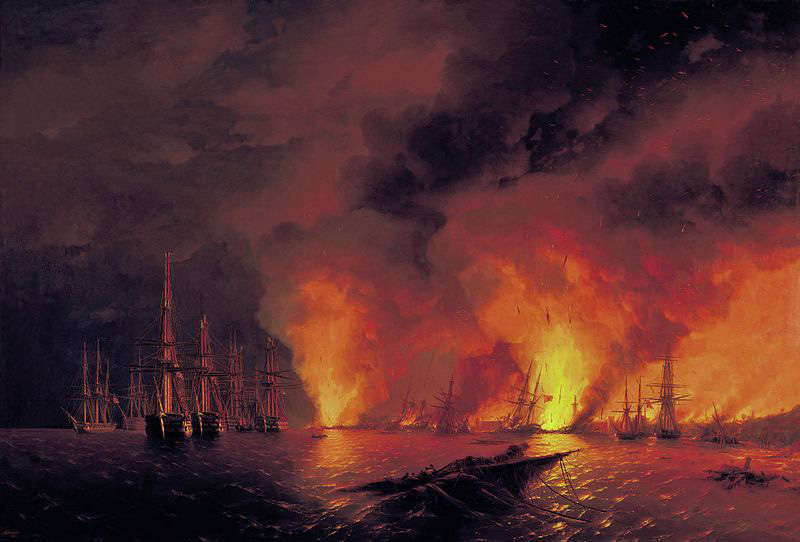
Congress of Paris (1856): A Peace conference opened in Paris after the Crimean War.
Wikipedia Painting: Crimean War; Battle of Sinop, by Ivan Aivazovsky.
February 25th, 1866
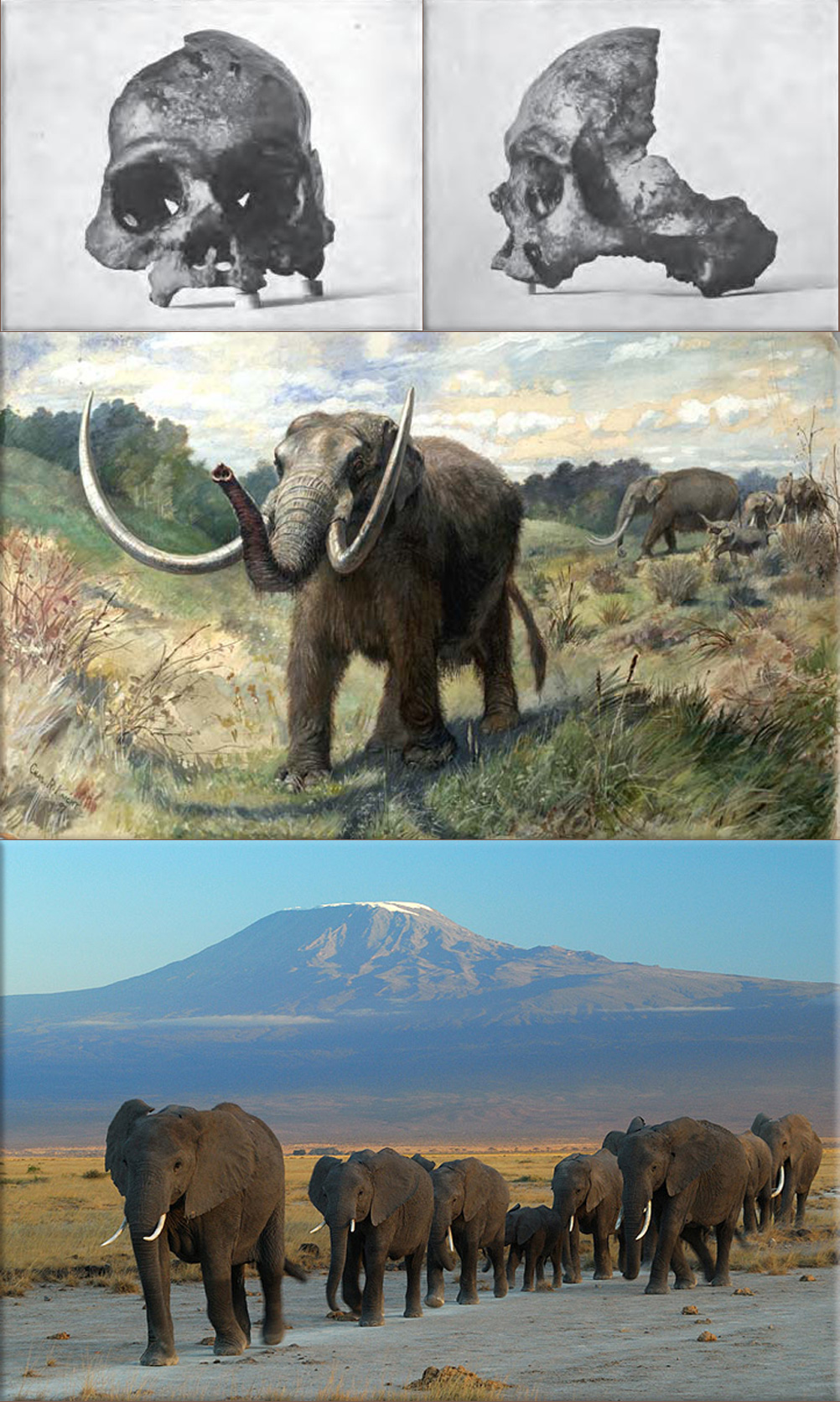
Miners in Calaveras County, California, discover what is now called the Calaveras Skull, human remains that supposedly indicated that man, mastodons and elephants had co-existed.
Wikipedia Images: Calaveras Skull; (Skeletal Remains Suggesting or Attributed to Early Man in North America) ● Mastodon Restoration by Charles R. Knight ● Elephant family at moving at Amboseli national park against Mount Kilimanjaro.
February 25th, 1875
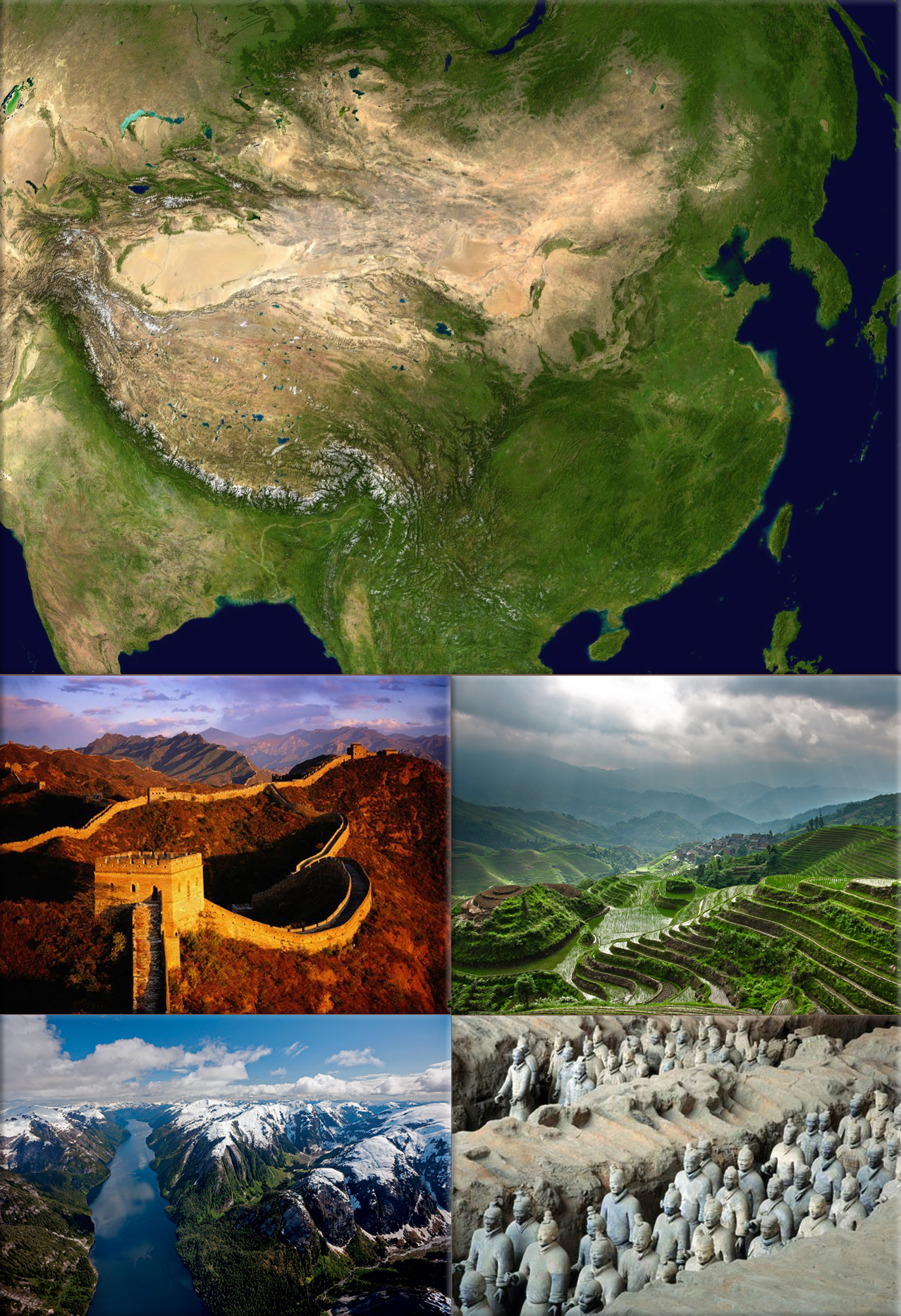
China:
1875 - Guangxu Emperor of China began his reign, under Empress Dowager Cixi's regency.
Wikipedia Photo: China from NASA Wordwind Satellite; © Great Wall of China, credit National Geographic; LongJi Terrace, credit National Geographic; Great Bear Rainforest, credit Paul Nicklen, National Geographic; Platoons of clay soldiers were buried with China's first emperor, Qin Shi Huang Di, (required a labor force of 700,000 to build), credit O. Louis Mazzatenta, National Geographic.
February 25th, 1901

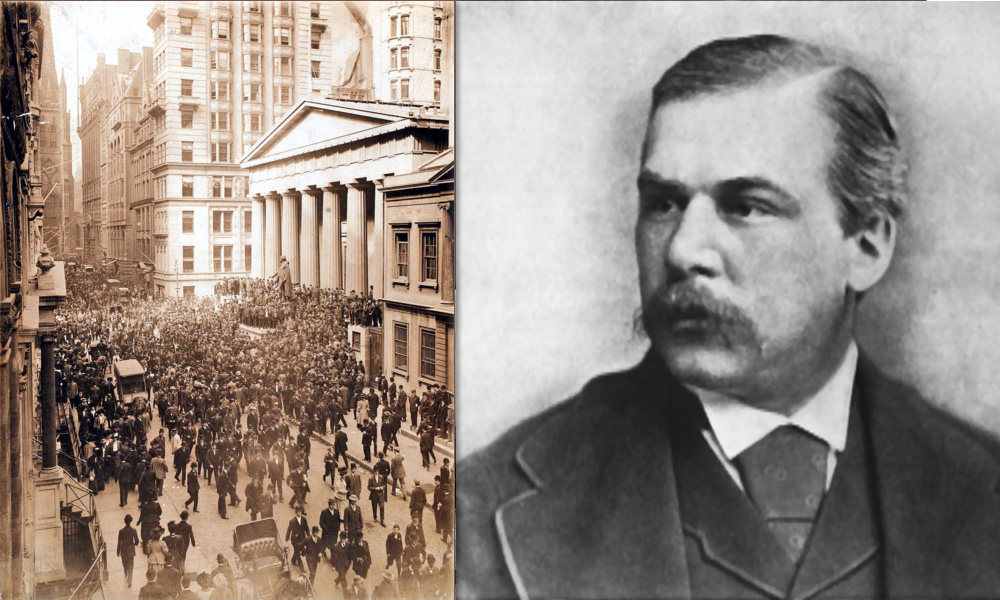
J. P. Morgan incorporates the United States Steel Corporation.
Wikipedia Photo: Club painting of J. P. Morgan, first President of the Metropolitan Club ● J. P. Morgan, photographed by Edward Steichen in 1903 ● A swarm gathers on Wall Street during the bank panic in October 1907. Federal Hall, with its statue of George Washington / J. P. Morgan, who pledged large sums of his own money, and convinced other New York bankers to do the same, to shore up the banking system.
February 25th, 1912
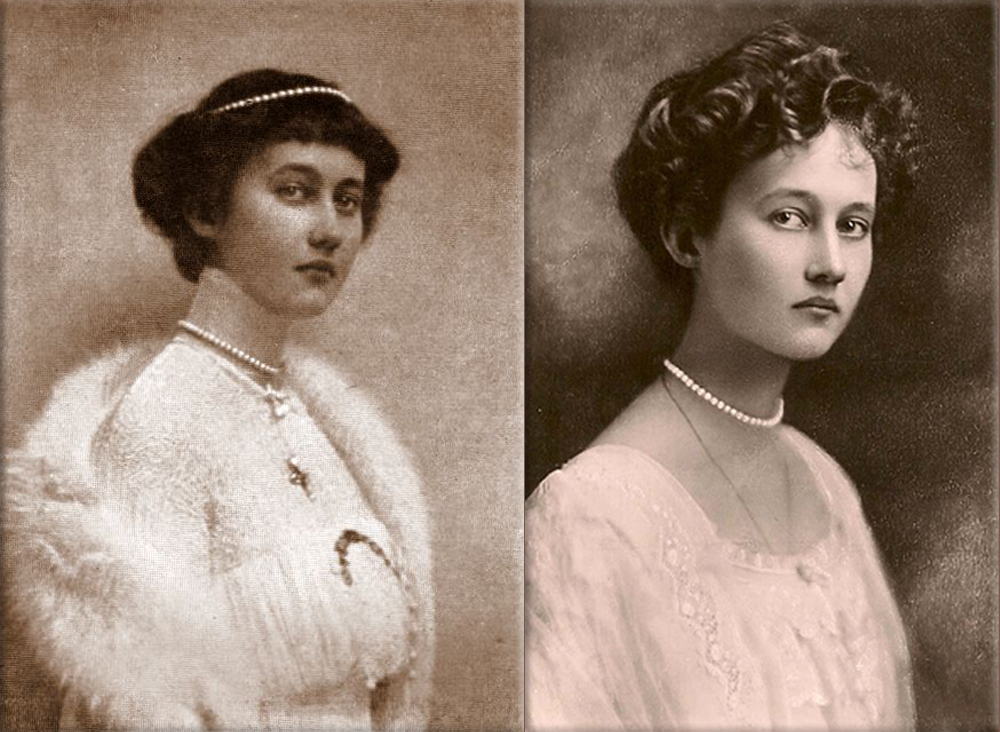
Marie-Adélaïde, the eldest of six daughters of Guillaume IV, becomes the first reigning Grand Duchess of Luxembourg.
Wikipedia Image: Marie-Adélaïde Grand Duchess of Luxembourg; (Marie-Adélaïde entered a convent, taking the name 'Sister Marie of the Poor', and died at Hohenburg Castle), credit AlexanderPalace.org
February 25th, 1916

World War I:
1916 - Battle of Verdun; Germans capture Fort Douaumont.
Wikipedia Photo: Trenches on the Western Front; a British Mark IV Tank crossing a trench; Royal Navy battleship HMS Irresistible sinking after striking a mine at the Battle of the Dardanelles; a Vickers machine gun crew with gas masks, and German Albatros D.III biplanes. National Archives and Records Administration.
February 25th, 1919
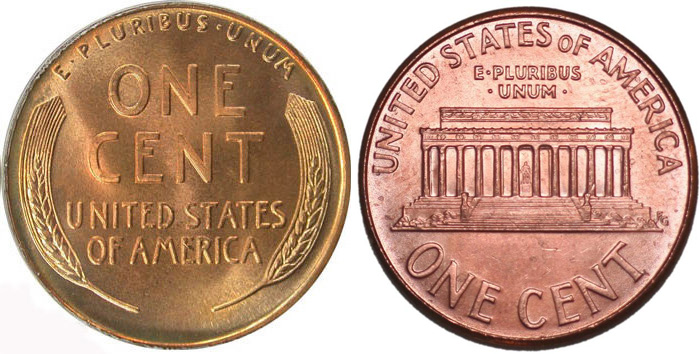
Oregon places a 1 cent per U.S. gallon tax on gasoline, becoming the first U.S. state to levy a gasoline tax.
Wikipedia Photo: United States of America - Penny
February 25th, 1921
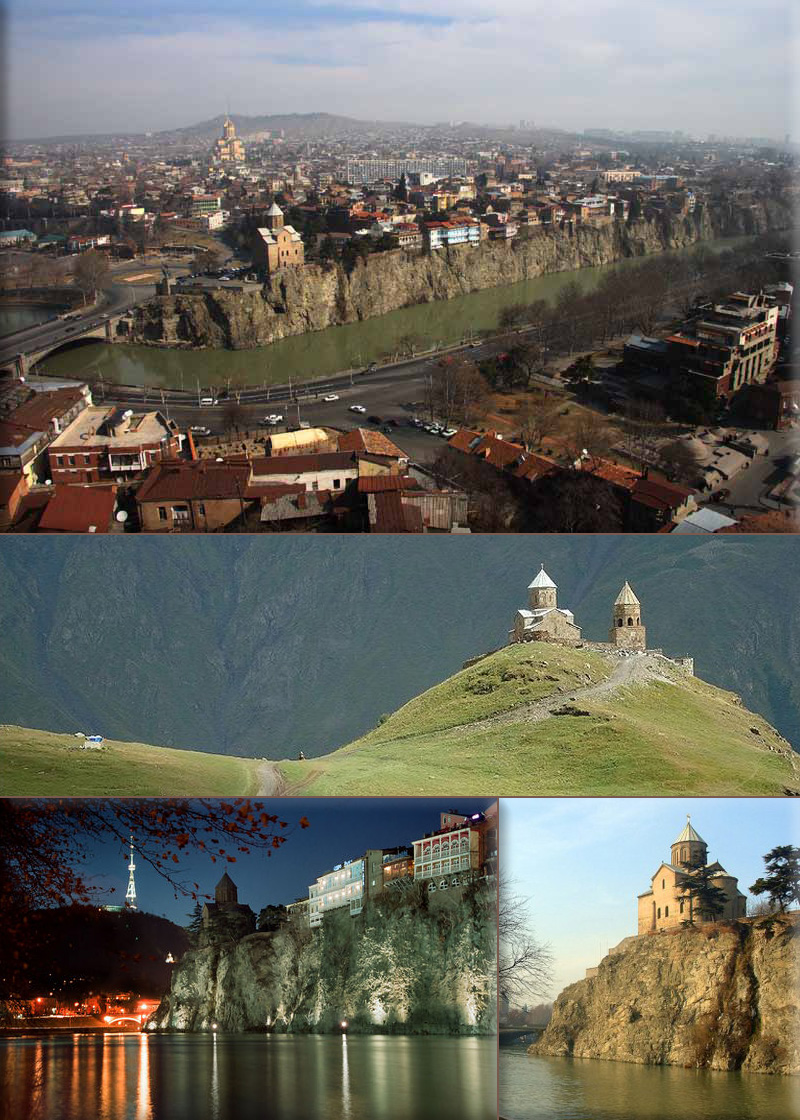
Soviet invasion of Georgia: Tbilisi, capital of the Democratic Republic of Georgia, is occupied by Bolshevist Russia.
Wikipedia Photo: Tbilisi (Georgia) Gergeti Trinity Church, below Mount Kazbegi, in Georgia; Metekhi Church, Tbilisi, Georgia
February 25th, 1932
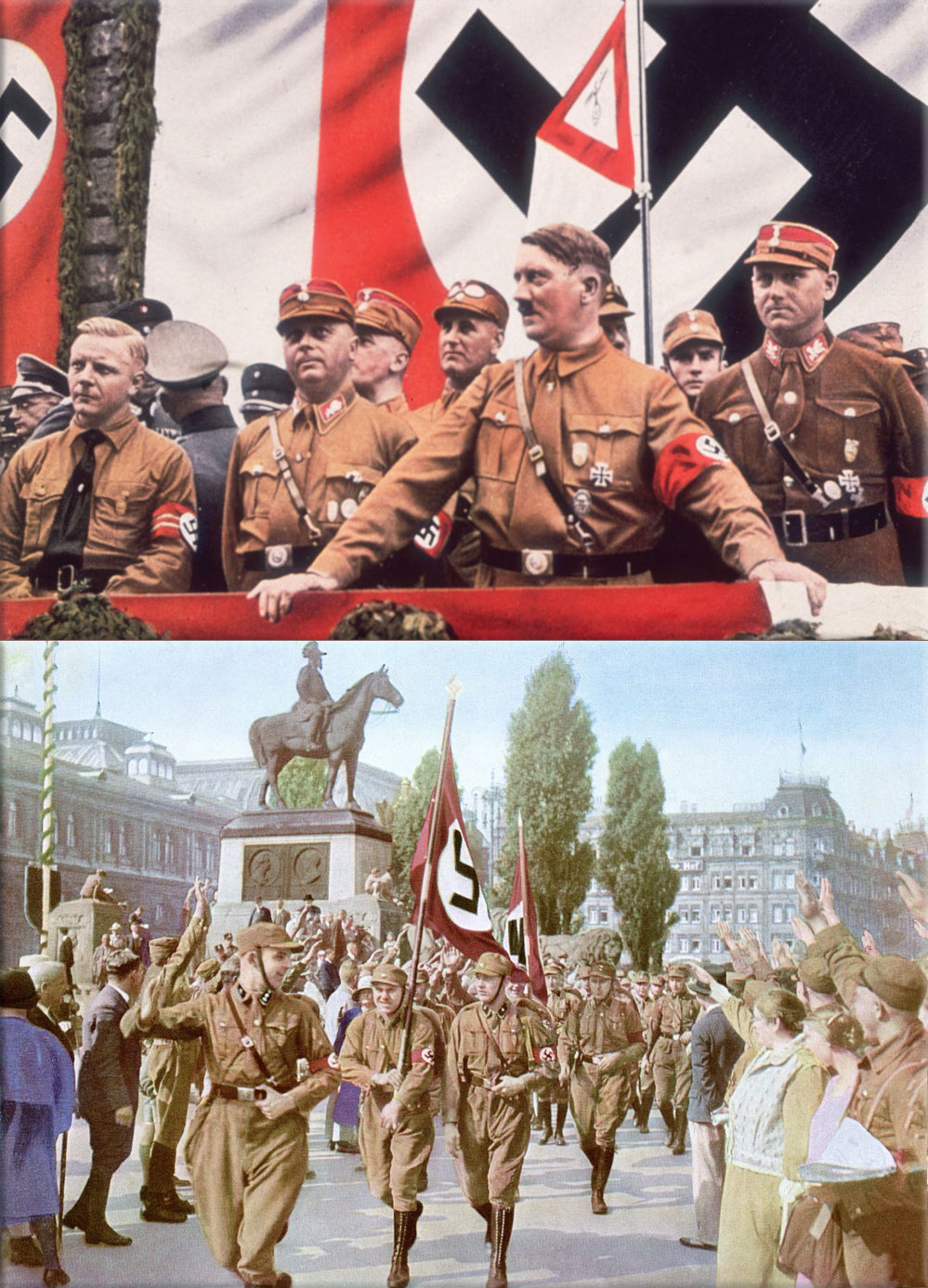
Adolf Hitler obtains German citizenship by naturalization, which allows him to run in the 1932 election for Reichspräsident.
Wikipedia Photo: Hitler and the Brownshirts; German Nazi activist Horst Wessel (left) at the head of a parade of S.A. stormtroopers, or “brownshirts”, in Nuremberg, Germany, 1929.
February 25th, 1933
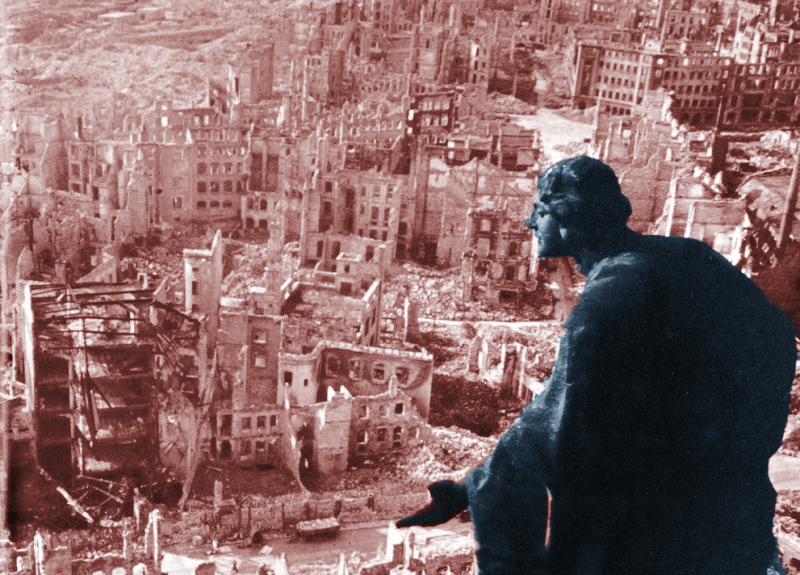

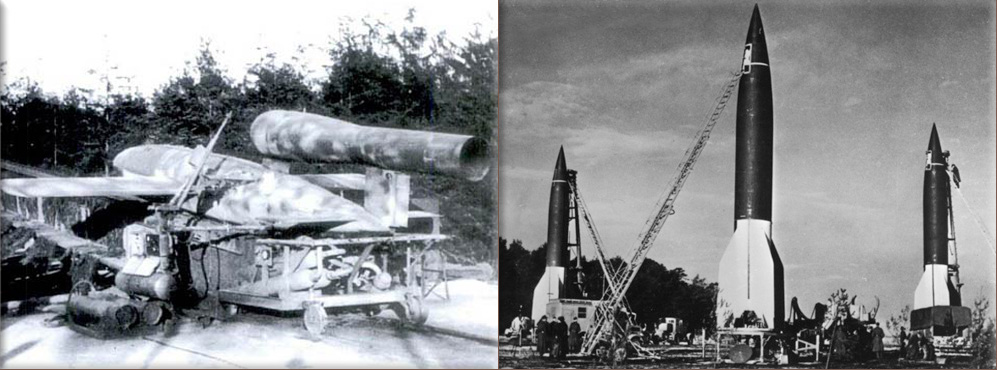
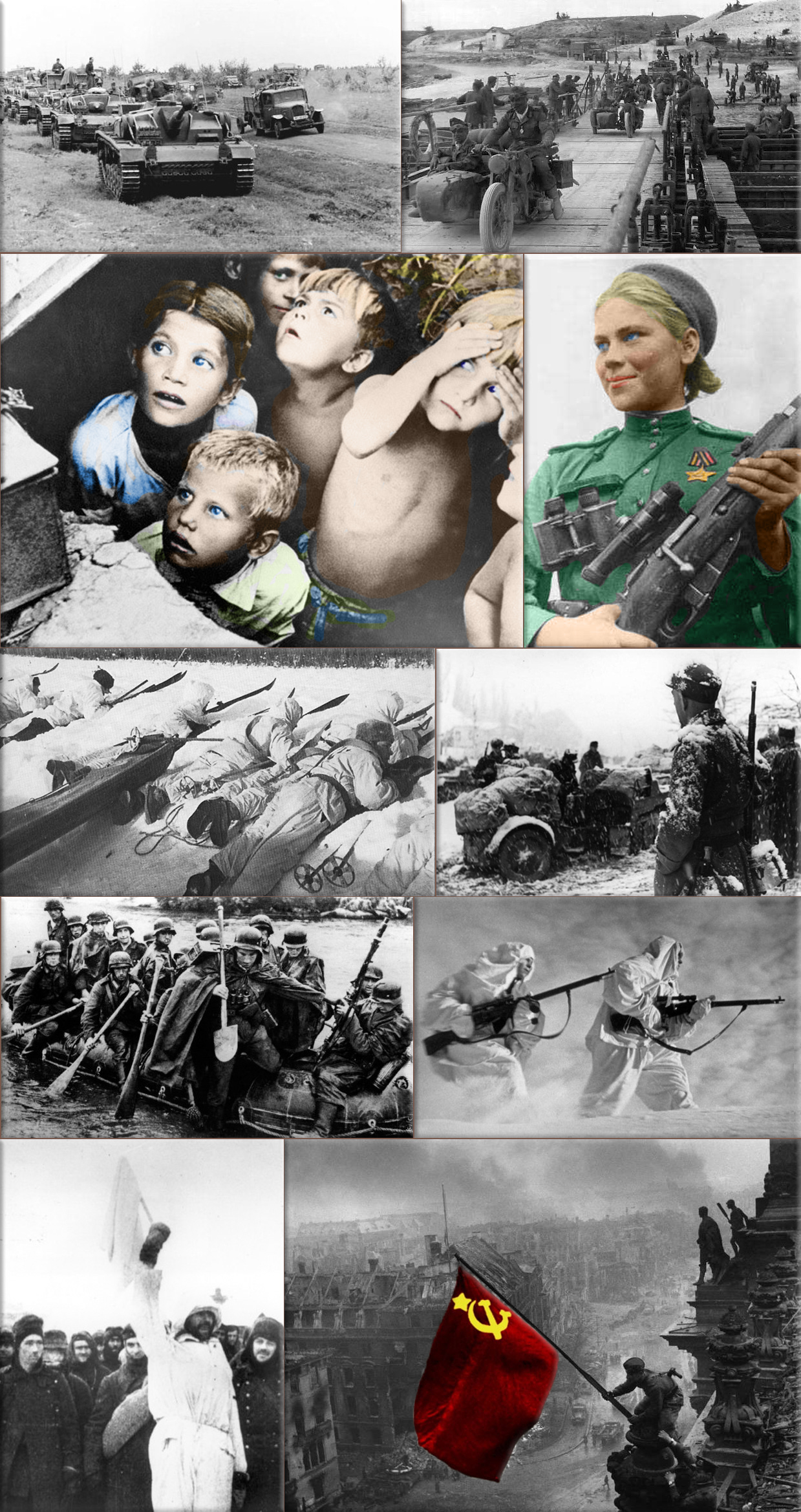
Pre World War II:
1933 - The USS Ranger is launched. It is the first United States Navy ship to be built solely as an aircraft carrier.
World War II:
1941 - February Strike; in occupied Amsterdam a general strike is declared in response to increasing anti-Jewish measures instituted by the Nazis.
1945 - Turkey declares war on Germany.
Post World War II:
1947 - The State of Prussia ceases to exist.
1948 - Czechoslovak coup d'état; The Communist Party takes control of government in Czechoslovakia.
Wikipedia Photo: Bombing of Dresden in World War II; August Schreitmüller's sculpture 'Goodness' surveys Dresden after a firestorm started by Allied bombers in 1945.
USS Bunker Hill was hit by kamikazes piloted by Ensign Kiyoshi Ogawa and another airman on 11 May 1945. 389 personnel were killed or missing from a crew of 2,600; Ensign Kiyoshi Ogawa, who flew his aircraft into the USS Bunker Hill during a Kamikaze mission on 11 May 1945; Kamikaze Missions - Lt Yoshinori Yamaguchi's Yokosuka D4Y3 (Type 33 Suisei) "Judy" in a suicide dive against USS Essex. The dive brakes are extended and the non-self-sealing port wing tank is trailing fuel vapor and/or smoke 25 November 1944.
German V1 flying-bomb and V2 Rockets - Preparations for a Salvo Launch of V-2 Rockets in the Heidelager near Blizna (Poland) (1944), credit German History in Documents and Images GHDI.
Eastern Front (World War II); Germans race towards Stalingrad. August 1942; Soviet children during a German air raid in the first days of the war, June 1941, by RIA Novosti archive; Soviet sniper Roza Shanina in 1944. About 400,000 Soviet women served in front-line duty units Caucasus Mountains, winter 1942/43; Finnish ski patrol: the invisible enemy of the Soviet Army with an unlimited supply of skis; Men of the German Engineers Corps cross a river which is swollen after the first autumn rains, to strengthen bridges linking the German positions on the central front in Russia. by Keystone / Getty Images. October 1942; Russian snipers fighting on the Leningrad front during a blizzard. Photo by Hulton Archive / Getty Images, 1943; German soldiers surrendering to the Russians in Stalingrad, the soldier holding the white flag of surrender is dressed in white so that there could be no doubt of his intentions, a Russian soldier is on the right of the photograph. by Keystone / Getty Images, January 1943.
February 25th, 1954
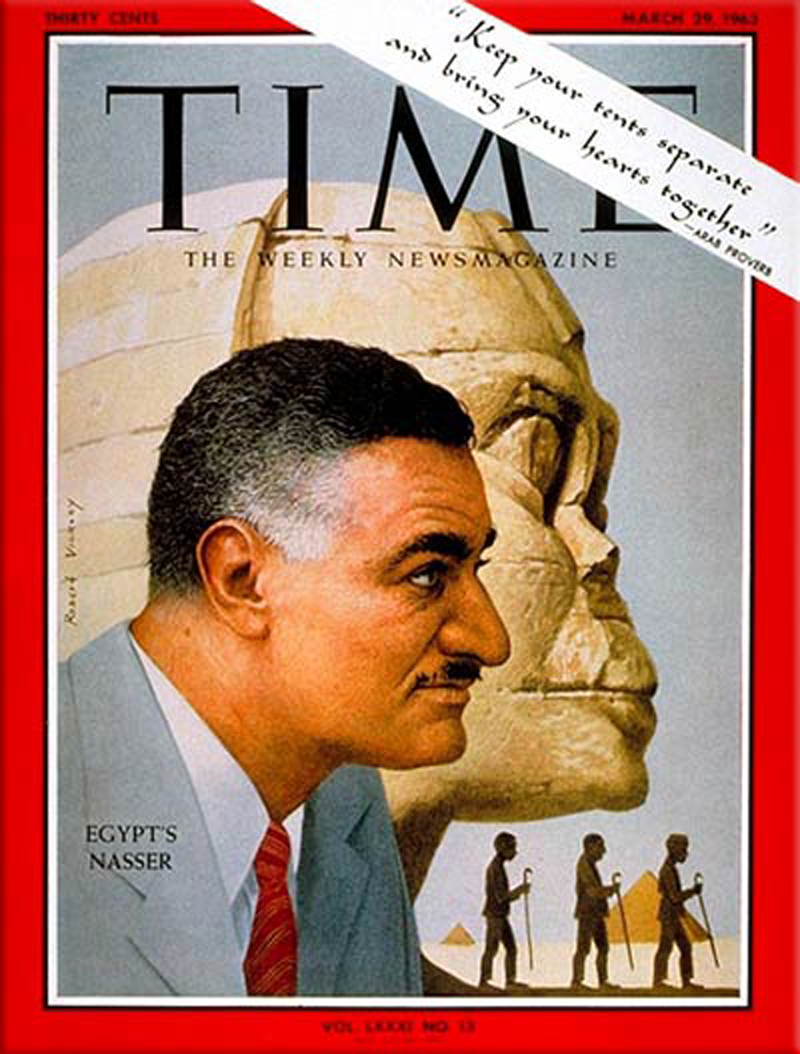
Gamal Abdel Nasser is made premier of Egypt.
Wikipedia Image: Gamal Abdel Nasser 2nd President of Egypt, 1st President of the United Arab Republic (UAR), Robert Vickrey, Time Cover (March 29, 1963).
February 25th, 1956
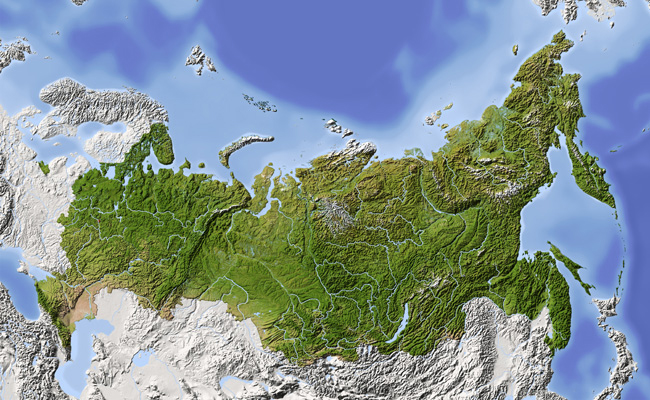
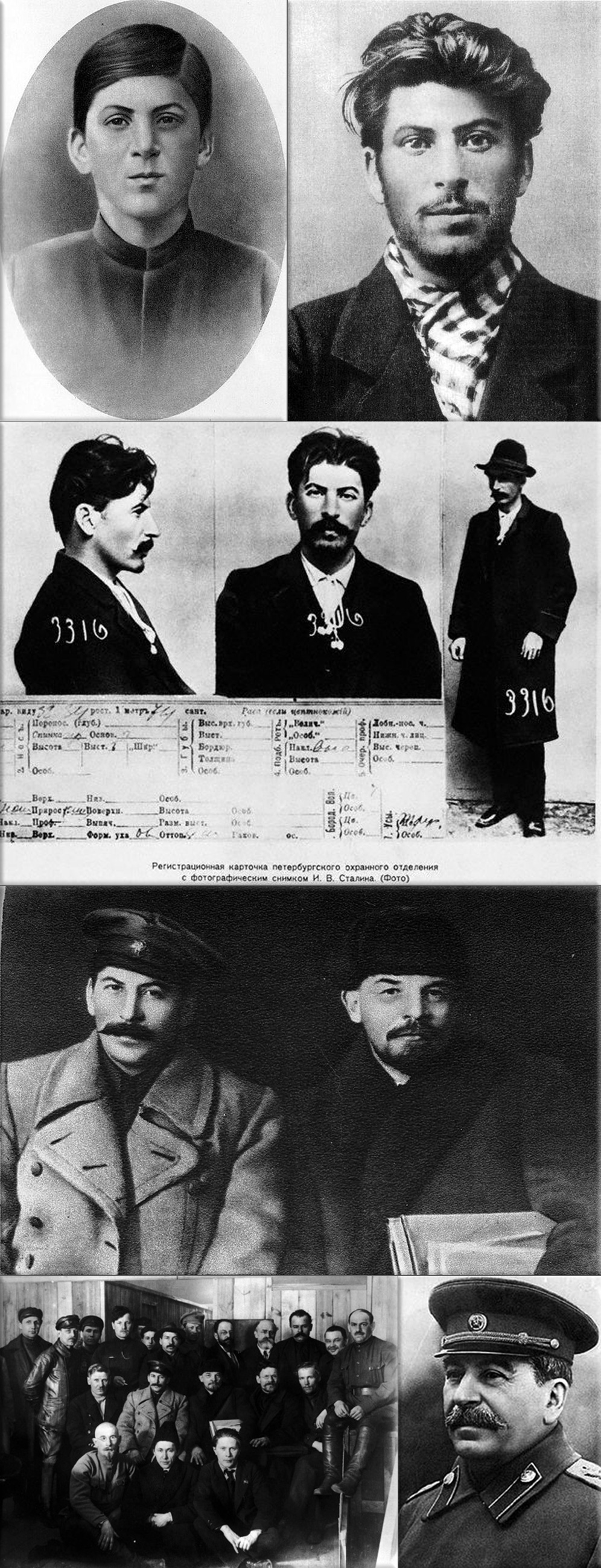
In his speech On the Personality Cult and its Consequences Nikita Khrushchev, leader of the Communist Party of the Soviet Union denounces the cult of personality of Joseph Stalin's crimes.
Wikipedia Image: Russia Satellite Map.
Wikipedia Photo: Joseph Vissarionovich Stalin (December 18, 1878 – March 5. 1953) was the Premier of the Soviet Union from 6 May 1941 until his death in 5 March 1953 ● Young Ioseb, 1894, aged 16 (left) and 23 (right) 1902 ● Prior to the revolution of 1917, Stalin played an active role in fighting the tsarist government. Here he is shown on a 1911 information card from the files of the Tsarist secret police in Saint Petersburg ● Stalin and Vladimir Lenin in 1919 ● A group of participants in the 8th Congress of the Russian Communist Party, 1919. In the middle are Stalin, Vladimir Lenin, and Mikhail Kalinin. ● Stalin in 1941, about 63 years of age.
February 25th, 1964
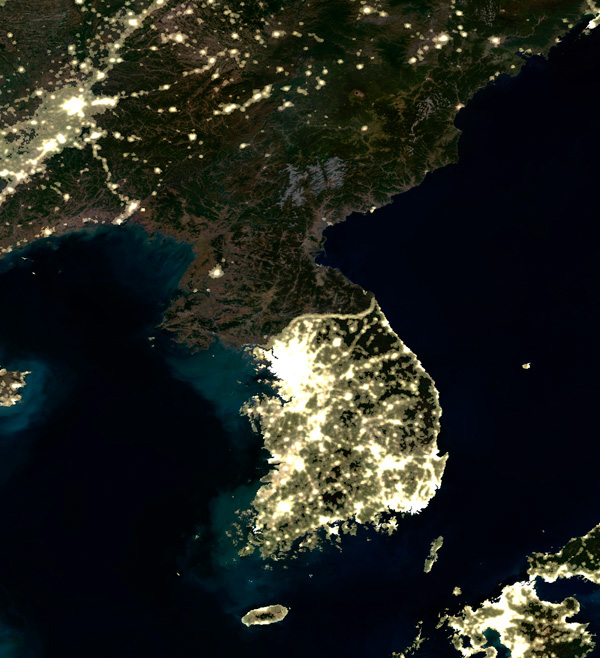
North Korean Prime Minister Kim Il-sung calls for the removal of feudalistic land ownership aimed at turning all cooperative farms into state-run ones.
Wikipedia Image: North Korea, world's most secretive country is also one of its darkest. Planet Observer, Science Photo Library
February 25th, 1964
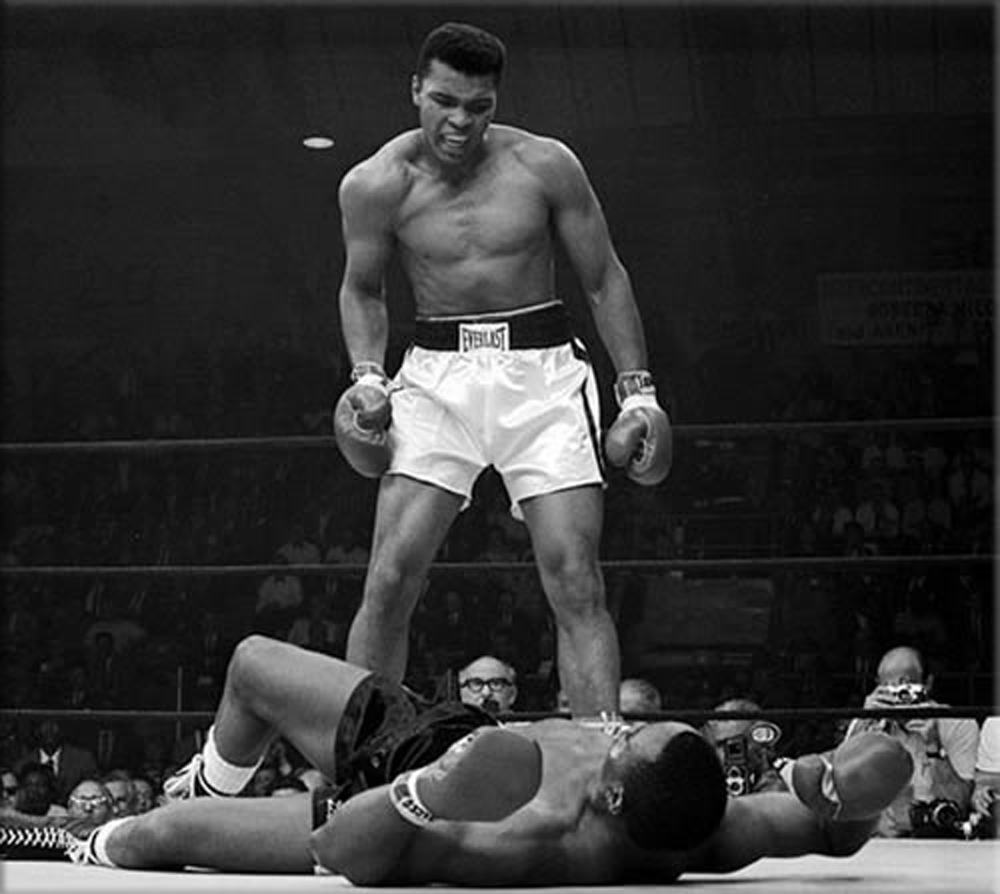
Muhammad Ali vs. Sonny Liston Muhammad Ali won the heavyweight championship with a 7th round TKO of Sonny Liston.
Wikipedia Photo: Muhammad Ali won the heavyweight championship with a 7th round TKO of Sonny Liston on February 25, 1964 in Miami.
February 25th, 1968


Vietnam War:
1968 - Ha My massacre; 135 unarmed citizens of Ha My village in South Vietnam's Quảng Nam Province are killed and buried en masse by South Vietnam troops.
Wikipedia Photo: Vietnam_War; Side view of an HH-53 helicopter of the 40th Aerospace Rescue and Recovery Squadron as seen from the gunner's position on an A-1 of the 21st Specialist Operations Squadron. (USAF Photo by Ken Hackman), Boston Globe;
Boeing B-52 Stratofortress, credit Free Republic;
Vietnam War: The Big Picture / Boston Globe.
February 25th, 1991
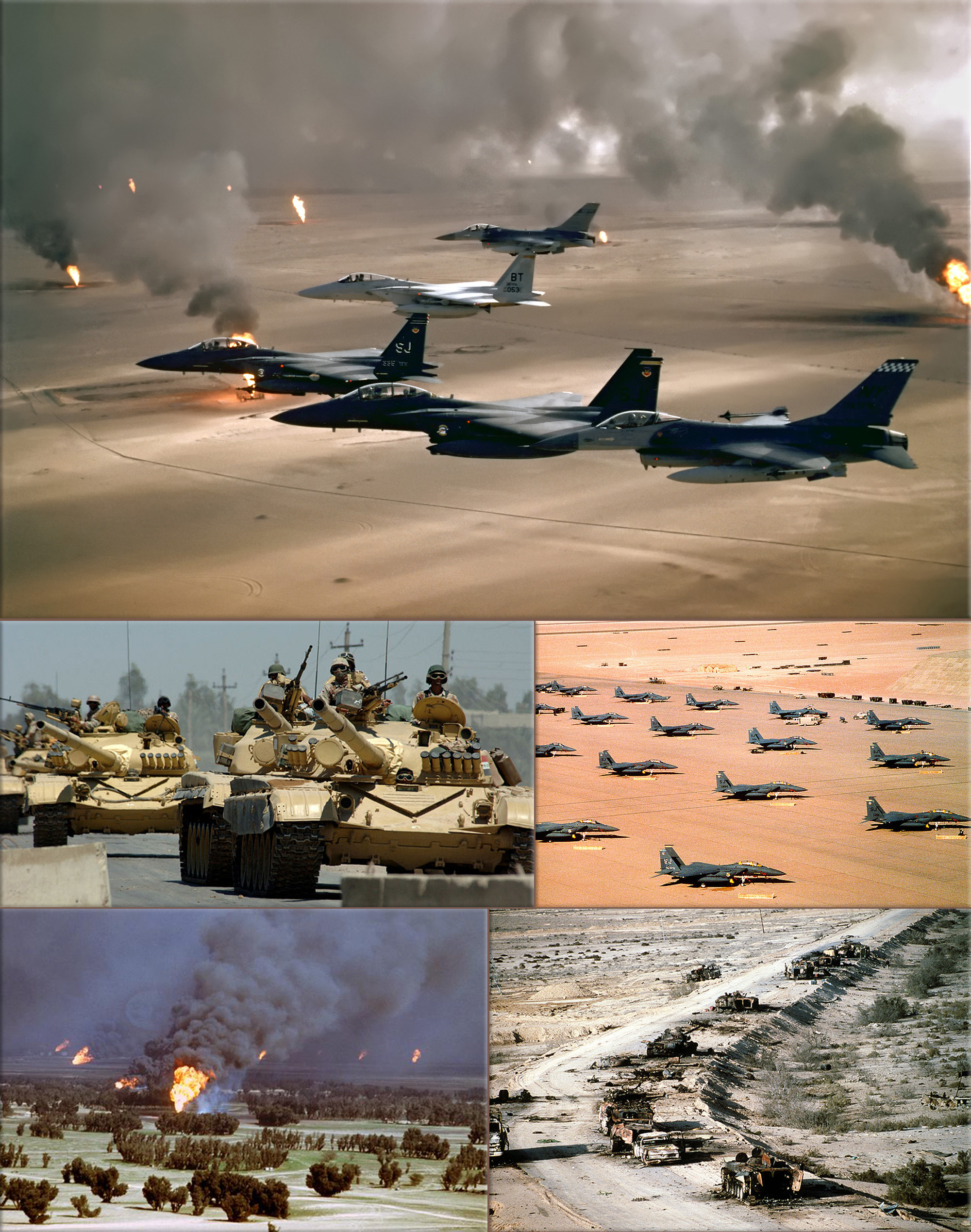
Gulf War - Iraq War:
1991 - An Iraq scud missile hits an American military barracks in Dhahran, Saudi Arabia killing 28 United States Army Reservists from Pennsylvania.
Wikipedia Photo: USAF F-15Es, F-16s, and a USAF F-15 flying over burning Kuwaiti oil wells; Iraqi Army T-72 main battle tanks. The T-72 tank was a common Iraqi battle tank used in the Gulf War; F-15Es parked during Operation Desert Shield; The oil fires caused were a result of the scorched earth policy of Iraqi military forces retreating from Kuwait; Aerial view of destroyed Iraqi T-72 tank, BMP-1 and Type 63 armored personnel carriers and trucks on Highway 8 in March 1991.
February 25th, 1992
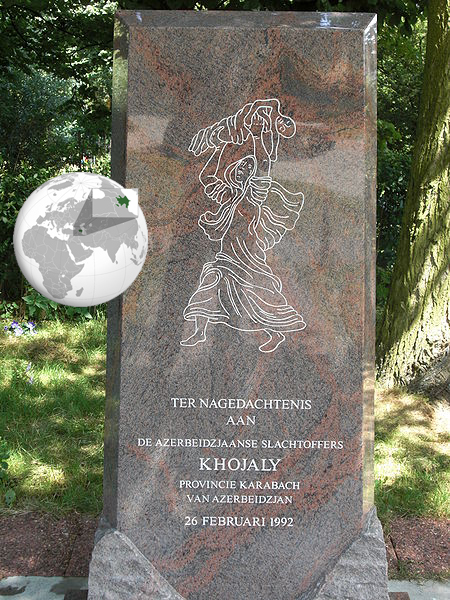
Nagorno-Karabakh War:
1992 - Khojaly Massacre; about 613 civilians are killed by Armenian armed forces during the conflict in Nagorno-Karabakh region of Azerbaijan.
Wikipedia Image: Khojaly Massacre: was the killing of hundreds of ethnic Azerbaijani civilians from the town of Khojaly on February 25–26, 1992 by the Armenian and, partially, by CIS armed forces during the Nagorno-Karabakh War.
February 25th, 2009
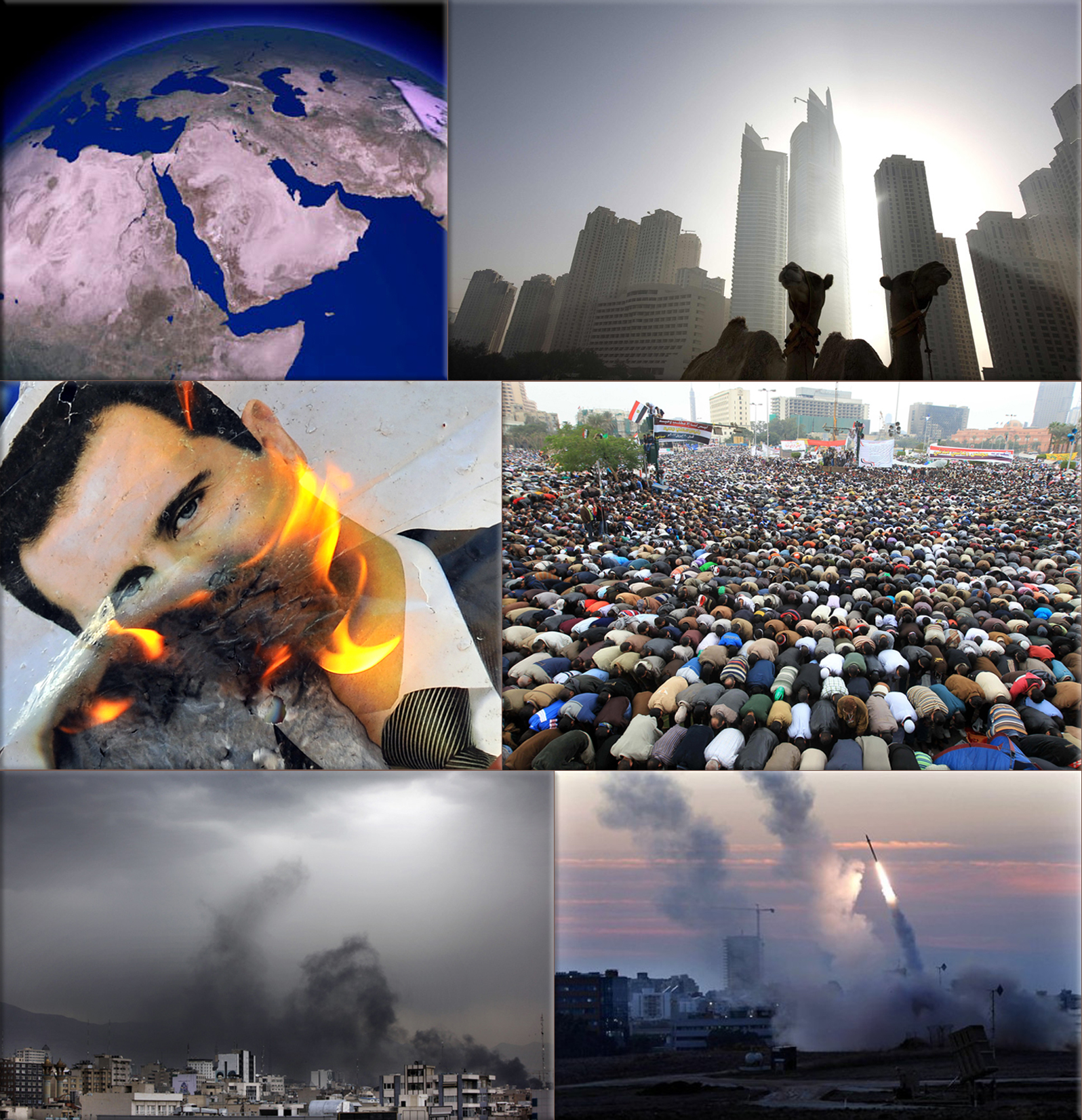
Modern conflicts in the Middle East, social unrest and terrorist attacks:
2009 - Bangladesh Rifles revolt; Members of the Bangladesh Rifles mutiny at their headquarters in Pilkhana, Dhaka, Bangladesh, resulting in 74 deaths, including more than 50 army officials.
1994 - Mosque of Abraham massacre: In the Cave of the Patriarchs in the West Bank city of Hebron, Baruch Goldstein opens fire with an automatic rifle, killing 29 Palestinian worshippers and injuring 125 more before being subdued and beaten to death by survivors.
Wikipedia Photo: Middle East satellite image, NASA. ● Camels are seen early morning on a beach in the Marina area of Dubai October 16, 2008. (Steve Crisp, Reuters) ● A portrait of Syrian President Bashar al-Assad burns during clashes between rebels and Syrian troops in Selehattin, near Aleppo, on July 23, 2012. (Bulent Kilic, AFP / GettyImages) ● Egyptians gather in their thousands in Tahrir Square to mark the one year anniversary of the revolution on Jan. 25, 2012 in Cairo Egypt. Tens of thousands have gathered in the square on the first anniversary of the Arab uprising which toppled President Hosni Mubarak. (Jeff J Mitchell, Getty Images) ● Black smoke rises above the Tehran skyline as supporters of Mir Hossein Mousavi burn tires and other material in the streets as they fight running battles with police to protest the declared results of the Iranian presidential election in Tehran, Iran, Saturday, June 13, 2009. (Ben Curtis, AP) ● The Iron Dome defense system fires to interecpt incoming missiles from Gaza in the port town of Ashdod, Thursday, Nov. 15, 2012. (Tsafrir Abayov, AP)
February 25th, 2015
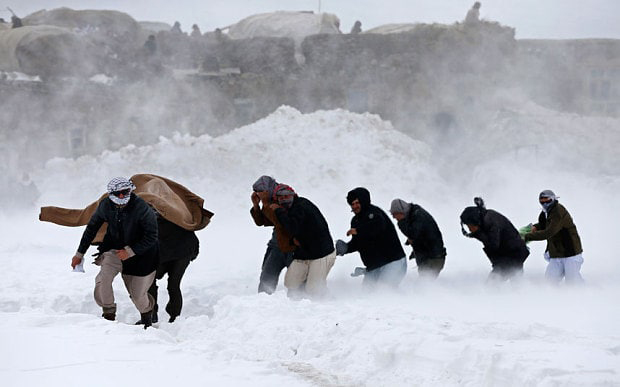
2015 - Afghanistan avalanches; at least 310 people are killed in avalanches in northeastern Afghanistan.
Wikipedia Image: Afghanistan avalanches; at least 310 people are killed in avalanches in northeastern Afghanistan. (Omar Sobhani/Reuters)
